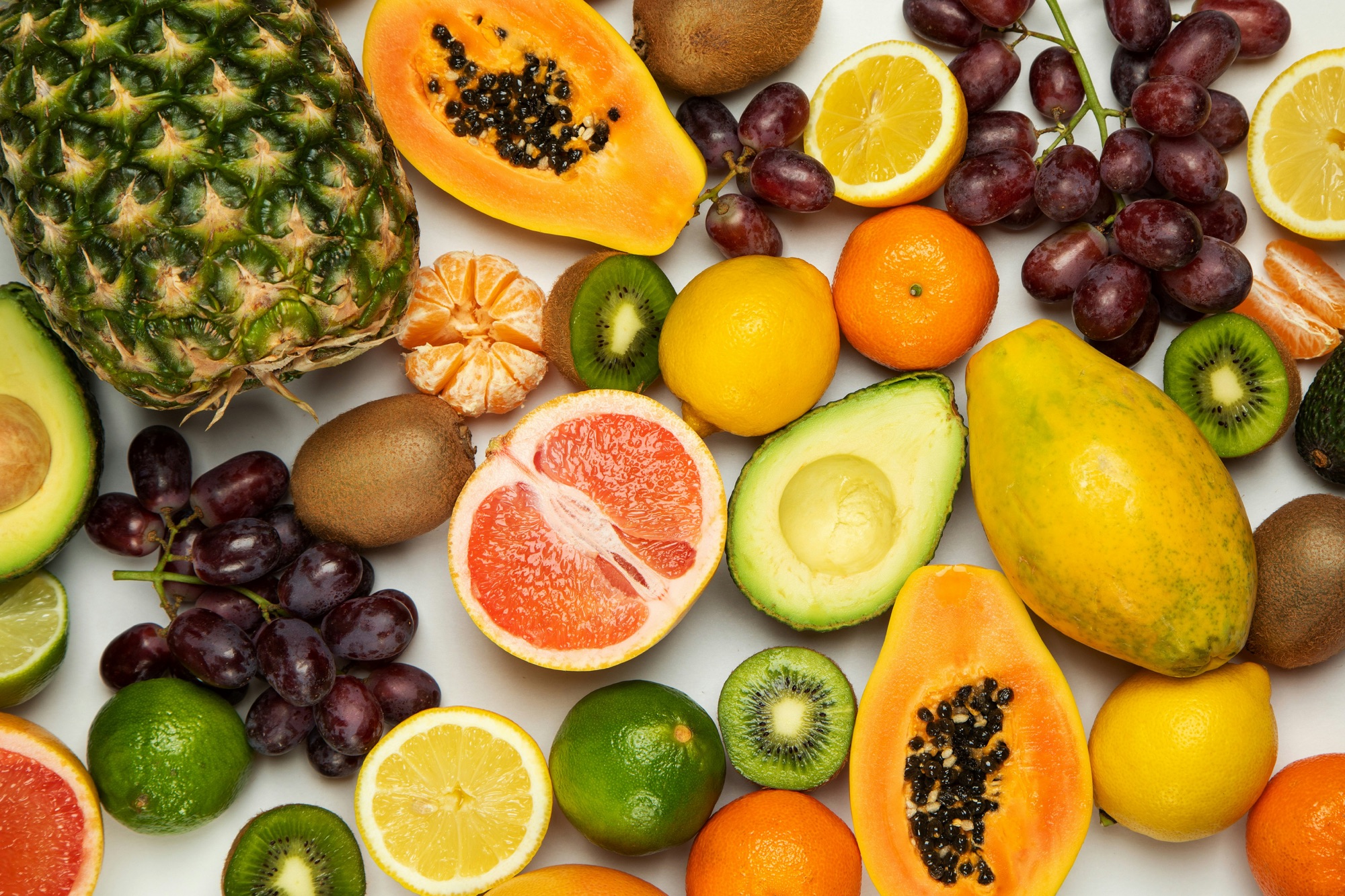Managing diabetes is like steering a ship through ever-changing waters. With a bit of knowledge and some practical tips, you can navigate the complexities of diet and lifestyle to maintain smooth sailing. Understanding how different foods impact your blood sugar levels is crucial, and fruits, being a natural part of any healthy diet, are often surrounded by questions and misconceptions.
Fruits and Blood Sugar: The Basics
Glycemia, or blood sugar levels, can fluctuate significantly in those with diabetes due to various factors like diet, medication, physical activity, and stress. Keeping these levels stable is a balancing act that requires attention to detail, especially when it comes to the sweet allure of fruits. While fruits are packed with vitamins, minerals, and fiber, they also contain natural sugars that can affect your blood sugar.
Understanding Glycemic Index and Glycemic Load
To make informed choices, familiarize yourself with the glycemic index (GI) and glycemic load (GL). The GI ranks foods based on how quickly they raise blood sugar levels, while GL considers both the GI and the portion size, giving a more rounded picture of a food’s impact.
- Low GI (55 or less): Fruits like apples, plums, and berries fall here. They are digested slowly, causing a gradual rise in blood sugar.
- Medium GI (56-69): Includes fruits like apricots and pineapples. These can be consumed in moderation.
- High GI (70 or more): Bananas and watermelons may spike blood sugar quickly and are best eaten in smaller portions.
Types of Diabetes and Fruit Consumption
Diabetes isn’t one-size-fits-all, and fruit consumption should be tailored to the type of diabetes someone is managing.
Type 1 Diabetes
People with type 1 diabetes rely on insulin injections since their bodies don’t produce insulin. This allows for some flexibility in diet, but it requires precise management of insulin dosages in response to carbohydrate intake. For these individuals, fruit can be enjoyed more freely, provided it’s balanced with insulin management and other carbohydrates in the meal.
Type 2 Diabetes
For those with type 2 diabetes, lifestyle plays a significant role. They often need to be more cautious with fruit intake. Limiting fruit servings to one or two per day helps maintain blood sugar levels within target ranges. Pairing fruits with protein or healthy fats, like a handful of nuts, can also slow sugar absorption.
Fruits Diabetic Patients Can Enjoy
Let’s delve deeper into the fruits that can fit comfortably into a diabetic-friendly diet. These selections offer nutritional benefits without a hefty sugar load.
Low-Sugar Favorites
- Apricots: With only about 3.9 grams of sugar per apricot, they’re an excellent choice for a snack or salad topper. Rich in vitamin A, they promote eye health.
- Pineapple: Though slightly higher on the glycemic index, pineapple provides bromelain, an enzyme that aids digestion. Enjoy in moderation.
- Berries: Blueberries, strawberries, and raspberries are antioxidant powerhouses. Their fiber content is a bonus, aiding in digestion and blood sugar control.
- Plums: With around 7 grams of sugar per fruit, plums offer a sweet treat with a low glycemic punch.
- Apples: High in fiber and vitamin C, apples are a versatile and filling choice. Pair with peanut butter for a balanced snack.
Other Recommended Fruits
Some fruits, while slightly higher in sugar, can still be part of a diabetes-friendly diet when eaten thoughtfully.
- Citrus Fruits: Oranges, grapefruits, lemons, and limes not only provide vitamin C but also have soluble fiber, which can help manage cholesterol levels.
- Tropical Fruits: Papaya and watermelon are refreshing and hydrating, helping to satisfy a sweet craving without a significant sugar spike.
- Peaches and Nectarines: These stone fruits are not only delicious but also nutrient-dense, offering vitamins A and C. Enjoy in moderation, perhaps sliced over a bowl of Greek yogurt.
Fruits to Limit in a Diabetic Diet
Being mindful of portion sizes can make a significant difference when consuming fruits that are naturally higher in sugar content.
Higher Sugar Fruits
- Bananas: A medium banana has about 14 grams of sugar. Opt for smaller bananas or eat half at a time, perhaps added to a morning oatmeal for fiber balance.
- Grapes and Cherries: These fruits, while offering antioxidants and vitamins, are best consumed in small amounts. Consider adding them to a mixed fruit salad for variety.
- Mangoes and Figs: Both are nutrient-rich but should be treated as an occasional indulgence due to their sugar content.
Fruits to Avoid for Diabetics
Certain fruits and fruit products can cause unwanted spikes in blood sugar and are best avoided or consumed very sparingly.
High Glycemic and Processed Fruits
- Dried Fruits: The drying process concentrates sugars, making even a small handful of raisins or dates a significant sugar source. If you must indulge, do so in very small quantities and balance with a protein.
- Canned Fruits with Syrup: Always choose those packed in water or natural juice if you can’t avoid canned fruits. The syrup adds unnecessary sugar, negating the fruit’s natural benefits.
- Fruit Juices: Even freshly squeezed juices lack the fiber of whole fruits, leading to quicker sugar absorption. Dilute juices with water or opt for whole fruit instead.
- Fruit Smoothies: Many commercial smoothies contain added sugars and full-fat yogurts. If you make your own, use unsweetened almond milk and low-glycemic fruits.
- Tropical Fruits: Lychees and jackfruit are delicious but should be consumed with caution due to their high sugar content.
Practical Tips for Fruit Consumption
Incorporating fruits into a diabetic diet is about balance and smart choices. Here are some practical tips to ensure you’re getting the most out of your fruit intake without compromising your blood sugar levels.
Portion Control and Timing
- Mind Your Portions: Use a small bowl or plate to serve fruit, helping to mentally adjust to smaller portions.
- Timing Matters: Eating fruit as part of a meal, rather than as a standalone snack, can help slow sugar absorption.
Pairing for Balance
- Combine with Protein: Pair fruits with cheese, nuts, or a boiled egg. This combination can help stabilize blood sugar levels.
- Fiber First: Starting your meal with a salad or vegetables can help regulate how quickly your body digests sugars from fruits.
Whole Fruits Over Processed
- Choose Whole Fruits: Whenever possible, opt for whole fruits instead of juices or smoothies. The fiber content aids in slow absorption.
- Read Labels Carefully: If choosing packaged fruit snacks, scrutinize labels for hidden sugars or syrups.
Creating a Diabetes-Friendly Fruit Plan
Creating a plan for fruit consumption can help maintain optimal health and prevent spikes in blood sugar. Here’s how to get started:
Step-by-Step Guide
- Assess Your Preferences: Identify which fruits you enjoy and categorize them based on sugar content.
- Plan Your Meals: Incorporate low-sugar fruits into your daily meal plan, ensuring they complement your overall diet.
- Monitor Your Response: Keep a food diary to track how different fruits affect your blood sugar levels.
- Consult Professionals: Work with a nutritionist or dietitian to tailor your fruit intake to your individual health needs.
Avoiding Common Mistakes
- Skipping Fiber: Always pair fruits with fiber-rich foods to slow sugar absorption.
- Neglecting Labels: Don’t assume all products labeled “natural” or “healthy” are suitable; always check the sugar content.
- Overlooking Variety: Rotate your fruit choices to ensure a broad range of nutrients and to avoid monotony.
The Role of Exercise and Lifestyle
Remember, diet is just one piece of the diabetes management puzzle. Regular physical activity can significantly enhance your body’s ability to use insulin effectively, aiding in blood sugar control. Aim for at least 150 minutes of moderate exercise weekly, such as brisk walking or swimming. Staying active helps regulate blood sugar and enhances overall well-being.
Wrapping It All Up
Fruits can and should be part of a balanced diet for someone managing diabetes, but it’s all about making informed choices. Prioritize low-sugar fruits, maintain portion control, and pair fruits with other macronutrients to keep blood sugar levels stable. By understanding your body’s response and working closely with healthcare professionals, you can enjoy the benefits fruits offer without compromising your health.
The journey with diabetes is ongoing, filled with learning and adapting. Embrace the diversity and vibrant flavors of fruits that align with your health goals and enjoy the nutritional benefits they provide at your table.




